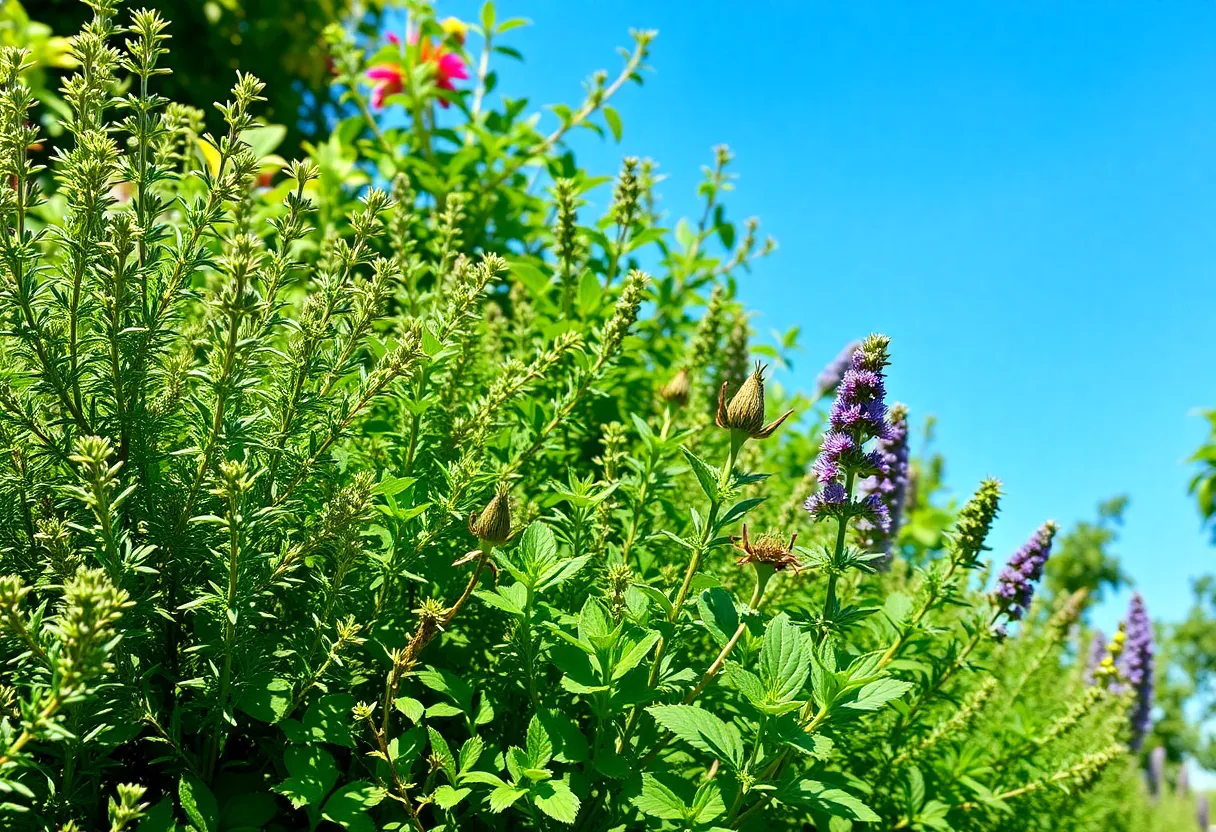Growing a Selection of Hardy Herbs in Your New York Garden Can Provide Fresh Flavors Year-Round
For gardening enthusiasts in New York, cultivating a variety of hardy herbs offers an excellent way to enjoy fresh flavors regardless of the season. By selecting perennial species and employing specific cultivation techniques, you can establish a sustainable herb garden that yields aromatic leaves throughout the year. This guide provides a comprehensive overview of the most resilient herbs suited to New York’s climate, along with practical strategies to ensure their successful growth.
Key Considerations for Growing Hardy Herbs in New York
Climate and Soil Conditions
New York’s climate features cold winters and warm summers. Successful herb cultivation requires understanding local temperature ranges, soil quality, and sunlight exposure. Well-drained soil is critical to prevent root rot, especially during wetter seasons.
Sunlight Requirements
Most hardy herbs thrive in areas with full sun, receiving at least 6 hours of direct sunlight daily. Some, such as parsley and mint, tolerate partial shade, which can be beneficial during the hottest months.
Watering and Maintenance
Consistent watering is essential, particularly during dry spells. Water when the top inch of soil feels dry. Regular pruning encourages bushier growth, increases yield, and prevents legginess.
Herb Focus: Species Suited for Year-Round Cultivation
1. Thyme
Thyme is an extremely versatile, hardy perennial that adapts well to New York’s climate. It requires full sun and well-drained soil. Once established, thyme is highly drought-tolerant and can withstand cold winter temperatures. Its low maintenance nature makes it ideal for continuous harvests.
Regular cutting encourages a denser, more flavorful plant and helps prevent pests. Thyme can be grown in garden beds or containers, making it flexible for different garden setups.
2. Oregano
Oregano is another robust perennial that flourishes in similar conditions as thyme. It prefers full sun and well-drained soil, withstanding drought once established. Oregano’s resilience to cold allows it to survive winter in most parts of New York, especially when mulched or protected during the coldest months.
Prune out flower stalks to promote a bushier growth habit. Oregano’s aromatic leaves are a staple for culinary uses, making it a valuable addition to an herb garden.
3. Sage
Sage is a durable perennial herb well-suited for New York’s growing conditions. It requires full sun and well-drained soil. Sage is drought-resistant and can tolerate colder temperatures, especially if provided with a sheltered planting site or a mulch cover during winter. Regular pruning enhances flavor and prevents the plant from becoming woody.
4. Rosemary
Rosemary is considered a tender perennial in colder climates. It needs full sun and well-drained soil for optimal growth. Gardeners often grow rosemary in containers, then bring it indoors before the first frost. Proper winter protection—such as moving containers indoors or creating insulated cover—ensures its survival.
Regular pruning encourages bushiness and aromatic leaf production. Rosemary’s fragrant leaves make it a prized culinary herb.
5. Parsley
Parsley, typically grown as an annual, is actually a biennial herb suited for partial shade or full sun. It prefers moist, well-drained soil. Growing parsley in containers allows winter protection indoors, providing fresh leaves throughout the year.
Consistent harvesting of parsley encourages persistent growth. It’s particularly suitable for kitchen windowsills or sheltered garden beds.
6. Chives
Chives are perennial and thrive in New York’s climate. They prefer full sun and well-drained soil. Chives are cold-hardy, capable of surviving harsh winters, and can be harvested repeatedly throughout the growing season. Regular cutting promotes multiple flushes of new, flavorful leaves.
Chives are easy to grow from seed or division and are perfect for borders and herb beds alike.
7. Mint
Mint is a perennial herb known for vigorous growth and culinary versatility. It prefers partial shade and moist, well-drained soil. Because it can become invasive, cultivating mint in containers is recommended to control its spread. Regular harvesting encourages robust growth and maintains flavor intensity.
For winter, mint plants can be moved indoors or grown in protected containers, ensuring a steady supply of fresh leaves.
Effective Cultivation Techniques for Year-Round Herb Growth
Soil Preparation
Prior to planting, amend soil with organic matter to improve fertility and drainage. Incorporate compost or well-rotted manure to foster healthy root development. Use a pH testing kit to keep soil slightly acidic to neutral (pH 6.0-7.0). Proper soil preparation enhances herb resilience and growth rate.
Watering Strategies
Herbs generally prefer moist but not waterlogged soil. Water deeply during dry spells but avoid overwatering. During winter or dry periods, adjusting watering frequency to soil moisture levels prevents root rot and stress.
Pruning and Harvesting
Regular pruning and harvesting stimulate new growth, improve flavor concentration, and maintain plant health. For perennial herbs, cut back after flowering or at the end of the growing season. For tender herbs like rosemary, pinching back stems promotes bushiness.
Container Growing and Winter Care
Growing herbs in containers offers flexibility, especially for tender species like rosemary. Bring pots indoors before the first frost, placing them in a sunny spot. Use supplemental grow lights if natural sunlight is insufficient. Mulching and protective covers can extend outdoor viability for hardy herbs during cold snaps.
Multipurpose Use of Herbs
Many perennial herbs double as ornamental plants. Incorporate them into flower beds or garden borders for aesthetic appeal and culinary utility. This integration provides continuous access to fresh herbs and enhances garden productivity.
Conclusion
By carefully selecting hardy perennial herbs and rigorously implementing best practices in soil preparation, watering, pruning, and winter protection, gardeners in New York can enjoy a year-round supply of fresh herbs. These plants not only enrich culinary creations but also contribute to sustainable gardening practices. Remember that understanding each herb’s specific needs and adapting to seasonal challenges ensures a thriving, productive garden that offers aromatic flavors across all seasons.
Author: STAFF HERE NEW YORK WRITER
The NEW YORK STAFF WRITER represents the experienced team at HERENewYork.com, your go-to source for actionable local news and information in New York, the five boroughs, and beyond. Specializing in "news you can use," we cover essential topics like product reviews for personal and business needs, local business directories, politics, real estate trends, neighborhood insights, and state news affecting the area—with deep expertise drawn from years of dedicated reporting and strong community input, including local press releases and business updates. We deliver top reporting on high-value events such as New York Fashion Week, Macy's Thanksgiving Day Parade, and Tribeca Film Festival. Our coverage extends to key organizations like the Greater New York Chamber of Commerce and United Way of New York, plus leading businesses in finance and media that power the local economy such as JPMorgan Chase, Goldman Sachs, and Bloomberg. As part of the broader HERE network, including HEREBuffalo.com, we provide comprehensive, credible insights into New York's dynamic landscape.





